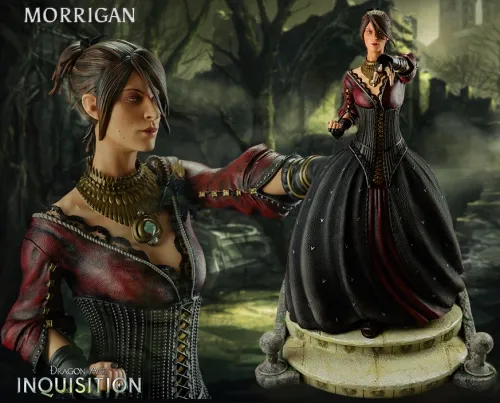A few weeks prior, former Dragon Age narrative leader David Gaider commended Clair Obscur: Expedition 33 for being to JRPGs “somewhat akin to what Baldur’s Gate 3 was to CRPGs.” He expressed surprise at the extensive attention and dialogue his remark generated – ‘notable dev with intriguing perspectives on current games’ often attracts attention – and by the diverse interpretations of his viewpoint.
Eager to glean his insights on the genre, particularly as he envisions his own RPG while his new company Summerfall concludes the promising, RPG-influenced roguelike Malys, I reached out for a more in-depth conversation.
It wasn’t that Gaider was dismissing or overlooking JRPGs. “Several individuals reacted, ‘there have been many excellent JRPGs. You’re coming off as someone who hasn’t played JRPGs in 20 years,'” he noted regarding some reactions. “No, I’ve played them, and I believe they’re quite consistent in what they offer. There have been some really commendable titles; like Metaphor [ReFantazio] is one recent example of an exceptional JRPG.”
What Gaider conveyed, he clarified to me, is that Baldur’s Gate 3 and Expedition 33 are “both essentially love letters to their genre that enable what they’ve built to resonate with a wider audience than what that genre typically reaches.”
We discussed how, during its peak popularity, Baldur’s Gate 3 was the must-play game even among individuals and communities who might usually avoid a dense, D&D CRPG. It was simply that remarkable; even if it wasn’t your preference, it could convert you. With pristine, lifelike presentation and distinct action elements, one could argue Expedition 33 has produced a similar impact for turn-based games. It’s the latest sensation, even beyond JRPG enthusiasts.
“The sales for BG3 were incredible,” Gaider continues, “and somewhat challenge a long-standing narrative – I remember during my time at EA, there was extensive analysis on the size of the RPG audience and the action audience, etc. They would provide estimates stating the RPG audience caps at approximately 5 million. But that doesn’t seem to hold true when the game is well-crafted.”
I’m unaware of how EA presently perceives the RPG market, but earlier this year, the publisher remarked that Dragon Age: The Veilguard “did not resonate with a broad enough audience.” This perspective aligns with Gaider’s evaluation of EA’s stance.
“I believe there’s a concept of expanding the audience, rather than viewing the audience as a limited number of individuals, correct?” Gaider adds. “And I believe that’s what Expedition 33 truly achieves. I think it successfully amalgamates the elements of JRPGs – and to be honest, I don’t think it’s innovating much. It’s incorporating several contemporary trends and presenting them in an engaging manner that I believe makes it highly accessible to those who typically wouldn’t engage with JRPGs. And achieves this with fully mocapped animations that are remarkably high quality.”
Beyond the potential reach of an exceptional RPG, Gaider suggests these two titles further illustrate more loudly for the audience “what’s attainable when a game is allotted time to mature, when it’s permitted to evolve. BG3 was quite remarkable in that it underwent a prolonged period in Early Access, a couple of years, I believe, during which it could respond to player feedback and develop beyond a point where, had they been under a publisher’s restrictions, they would probably have been rushed out, leading to a very different outcome.”
Expedition 33 director Guillaume Broche previously mentioned that creating a title like this in a AAA, publisher-regulated setting could have taken a long time just to obtain approval, assuming it was feasible at all.
Gaider concurred that it would likely involve extensive red tape, but also remarked that it’s “easy, I think, to place all the blame on publishers. They too are navigating under significant financial strain, alongside considerable internal pressure. Numbers always need to increase, which, I understand. It’s not ideal, but that’s just the reality they contend with.”
Nevertheless, such an environment can certainly stifle unique, unforgettable creativity in games, all in pursuit of the widest audience possible.
“When a publisher looms overhead, they seek very specific outcomes,” Gaider explains. “They desire mass appeal. They do not prioritize catering strongly to a particular audience. They seek mass appeal. They want to mitigate risk by envisioning how the appeal translates across various audience segments, which often tends to dilute the very specific aspects.

